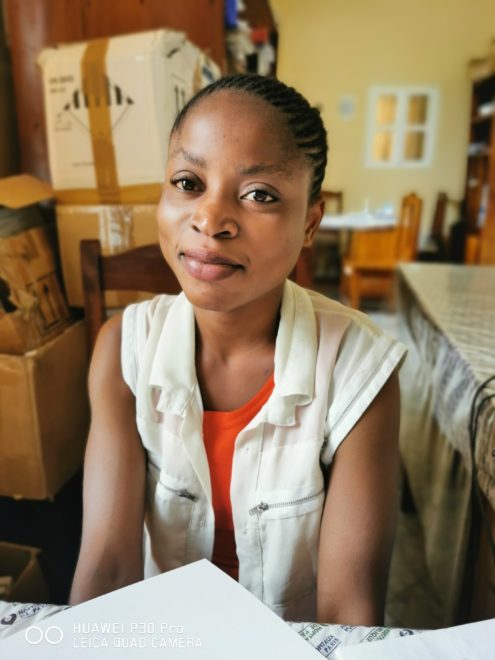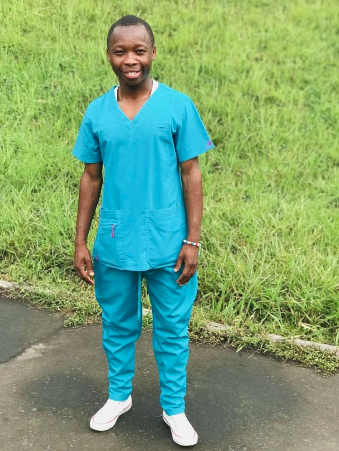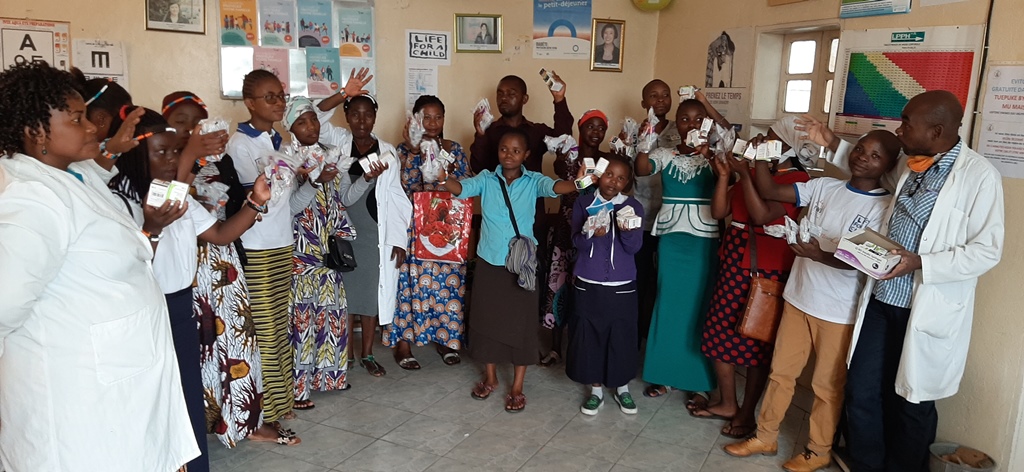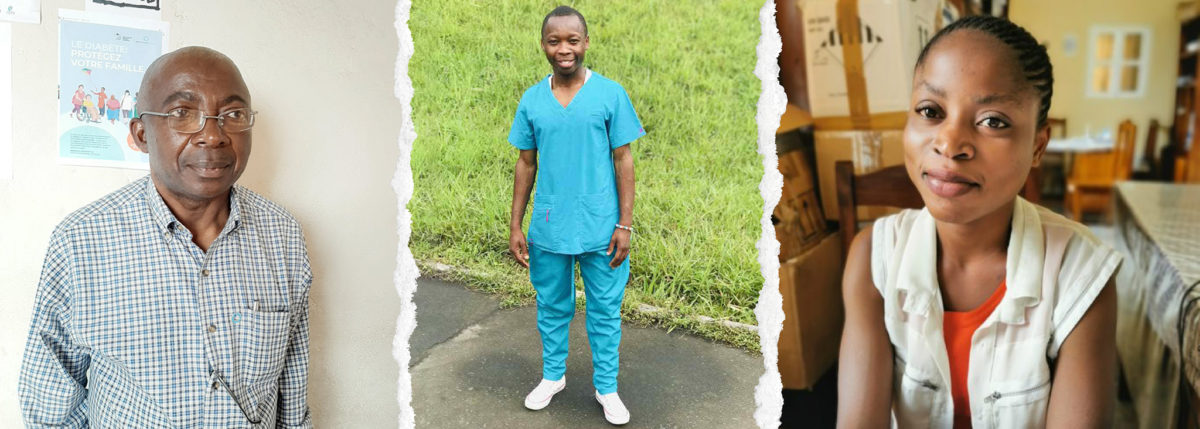Providing Diabetes Care Against the Odds in the Democratic Republic of Congo
Life for a Child supports young people living with diabetes in some of the world’s most vulnerable communities. In addition to the story shared below, read more about their work supporting young people like Rwandan sisters Ineza and Rebeka at ToClimbAThousandHills.org.

“In Congo, diabetes is a disease like any other. If you have the right medication, you get to live,” explains Furaha, a woman based in the Democratic Republic of Congo (DRC) who has lived with type 1 diabetes since she was 17 years old.
Now, Furaha relies on the Association of Diabetics of Congo (ADIC) to receive care for her diabetes. The clinic is a long way from her home; if she has money she will use the bus or a motorcycle, but often she must travel by foot which can take three hours or more.
Those with diabetes in the DRC who come from lower-income backgrounds often lack affordable access to resources and supplies. But even in these circumstances, some of these young people are able to remain optimistic because of local diabetes health clinics that provide diabetes education and resources.
One of these diabetes health clinics, ADIC, receives support from Life for a Child. Ten years ago, Life for a Child and ADIC formed a collaboration to help children and young adults living with diabetes in the DRC access insulin, supplies, education and peer support.
Diabetes in the DRC
“Diabetes is a public health problem,” Dr. Mbenza, a physician and endocrinologist in the DRC, says. “There is an accelerated need to provide citizens with diabetes education and awareness programs. This begins at home—we must first teach the patient to accept their condition and then how to live with diabetes. It is a big learning curve because we have to teach them how to eat again, take care of their body and inject insulin.”

Fleming is a 23-year-old man who lives in the DRC. He has had type 1 diabetes for four years. “When I was diagnosed with diabetes, I faced a lot of difficulties,” Fleming says. “I had a lot of despair when I found out because I was without the financial means to support the cost of the diet, medication, etc. Unfortunately, for us young people with diabetes we have conditions that always hinder our ambitions, it is the lack of financial means by being neglected by the government and the family.”
In recent years, the prevalence of diabetes in the Democratic Republic of Congo has become more apparent as doctors have seen an increase in diabetes consultations. The DRC, however, lacks official national statistics on the incidence and prevalence because data is not centralized at a national level. It is estimated that hundreds of thousands are affected by diabetes of all types in the DRC.
Another complication people in the DRC experience is internal displacement—when people are forced to flee their homes to avoid conflict and violence and/or natural or human-made disasters. Those living in the Eastern provinces of the country, such as Ituri, Maniema, North Kivu, South Kivu and Tanganyika, suffer from this due to war, climate disasters, volcanic eruptions and more. For people living with diabetes in the DRC, these emergencies can make it very difficult to ensure continuity of care. The medical records of people with diabetes are often lost when people are displaced due to a lack of electronic infrastructure within the health system.
Serving people with diabetes in the DRC
Throughout the North Kivu province and the Eastern DRC, ADIC has become a vital education hub for people with diabetes.
“We serve all patients who come to the center,” says Alfred Kakisingi, ADIC manager. “There are even doctors in post-graduate training who come to ADIC to learn about diabetes.”

When Furaha became ill at 17 years old, the doctor diagnosed her with typhoid fever due to poisoning and treated her with infusions and herbs. The doctor also noted Furaha had high blood sugar and told her father about it. But after first becoming sick, it still took five months for her to be officially diagnosed with type 1 diabetes.
“Every morning throughout that time, I went to my uncle’s house to test my blood sugar,” Furaha said. “When we saw there was no improvement, I went back to the hospital for insulin.”
Today, Furaha stores her insulin in a cupboard at home and takes two injections of insulin per day, 20 units in the morning and 20 at night. Insulin is free for Furaha through ADIC, which also provides her with funds to access foods that help keep her blood sugar level.
Thanks to ADIC’s efforts, diabetes management is integrated into several operational health centers in the North Kivu province. Still, Dr. Mbenza and his colleagues say they need more data to serve people there better.
“Ideally, a large-scale prevalence study in urban and rural areas is needed and should be funded to obtain figures that will provide an overview of the situation in the DRC,” says Alfred Kakisingi.
The role of Life for a Child’s collaboration with ADIC in the DRC

Many young people have significantly improved their health while living with diabetes thanks to the collaboration between ADIC and Life for a Child. In 2013, the organizations officially joined efforts to support children and young adults living with diabetes in the region. Life for a Child provides insulin, glucose meters and diabetes education.
“ADIC has played an important role in my life,” Furaha says. “Without them, I don’t think I would be alive today. The Association gives me advice and medication. Life for a Child also takes care of young diabetics.”
Fleming shares a similar sentiment: “I have spent a lot of time not knowing how to deal with this incurable disease. Fortunately, thanks to the advice and education on diabetes management organized by my ADIC treatment center I am able to manage my diabetes well.”
ADIC Manager Alfred Kakisingi says several young people have been given a better quality of life because of Life for a Child and ADIC. “Life for a Child is very supportive of the efforts and initiatives undertaken by ADIC in the education of young diabetics,” explained Kakinsingi. “They significantly help the means of survival and access to resources.”
Despite the many challenges Alfred Kakinsingi faces in his mission to deliver quality care, he remains hopeful for the future. “We are optimistic, even though the population lives in precarious conditions due to the lack of gainful employment,” he said. “The country’s population’s survival depends on informal jobs with no certain future.”
To learn more about Life for a Child and how you can help children and young adults in the DRC, visit LifeforaChild.org.
Life for a Child believes that no child should die of diabetes. Find out how you can help support young people living with diabetes in some of the world’s most vulnerable communities on their website. Beyond Type 1’s work with Life for a Child is sponsored by Lilly Diabetes.





